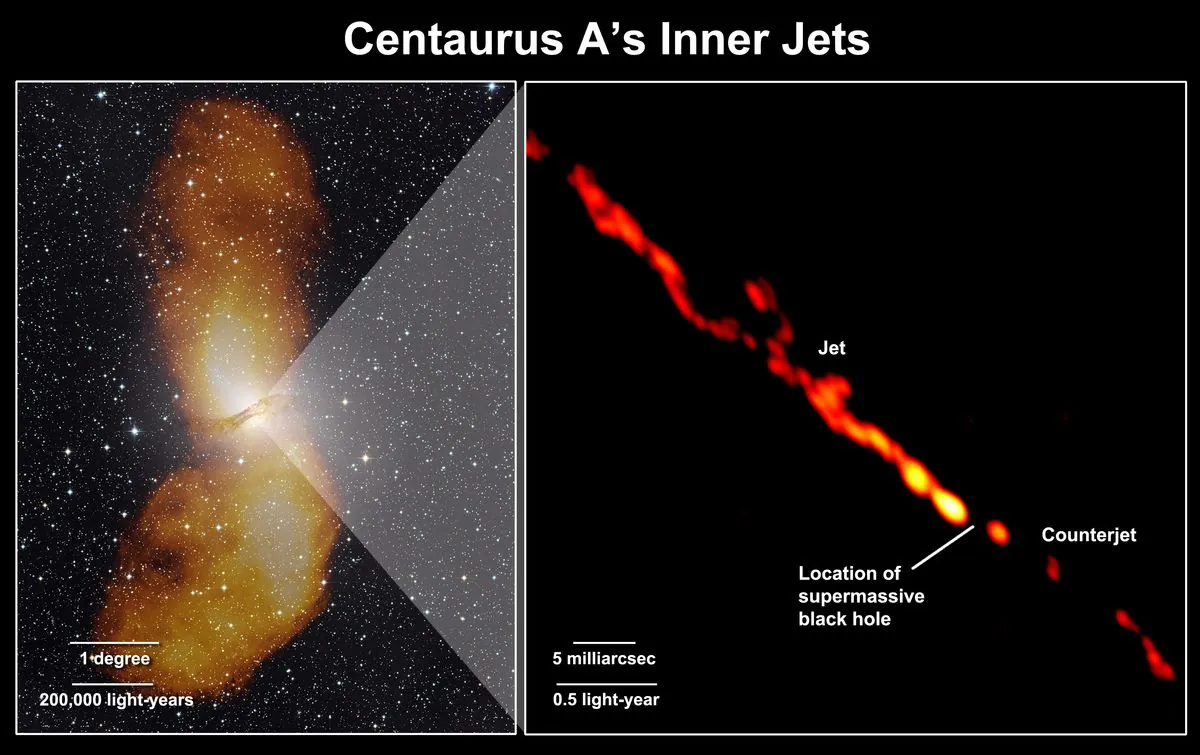Record-Breaking Black Hole Jets Discovered in Distant Galaxy
Scientists have identified the longest known pair of jets emanating from a black hole, stretching 23 million light-years. This discovery, dating back to the early universe, could provide insights into cosmic formation.

Astronomers have made a groundbreaking discovery, identifying the most extensive pair of jets ever observed streaming from a black hole in a distant galaxy. These plasma jets, composed of superheated matter, span an astonishing distance equivalent to 140 Milky Way galaxies aligned end-to-end.
The finding, reported in the journal Nature, was made possible through images captured by a European radio telescope. This revelation has significant implications for our understanding of the early universe and the role of black holes in cosmic evolution.
"This one has managed to reach a size that's so big."
The newly discovered jets extend approximately 23 million light-years, surpassing the previous record by 7 million light-years. To put this into perspective, a single light-year equals 5.8 trillion miles, emphasizing the immense scale of this phenomenon.

Black holes are known for their intense gravitational pull, typically consuming nearby matter. However, in some instances, superheated plasma can escape in the form of narrow, high-energy jets. These jets often dissipate quickly due to space turbulence or lack of new matter, but those originating from supermassive black holes can achieve enormous proportions.
The discovery is particularly intriguing as it dates back to when the universe was less than half its current age. This early occurrence challenges previous assumptions about the formation of such extensive jets in the cosmic timeline.
Martijn Oei, a co-author of the study from the California Institute of Technology, suggests that examining these jets could provide valuable insights into their potential influence on the early universe's development.
This finding adds to our growing knowledge of black holes and their impact on cosmic structures. It's worth noting that the first image of a black hole was only captured in 2019 by the Event Horizon Telescope, highlighting the rapid progress in this field of study.
The study of black holes has led to numerous fascinating discoveries. For instance, the largest known black hole, TON 618, is estimated to be 66 billion times the mass of our Sun. Additionally, black holes can spin at nearly the speed of light and cause time dilation in their vicinity due to intense gravitational fields.
As research continues, scientists hope to unravel more mysteries surrounding these cosmic phenomena, including the formation of supermassive black holes in the early universe and their role in shaping galaxies.


































